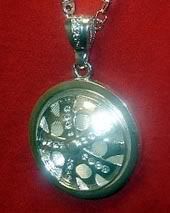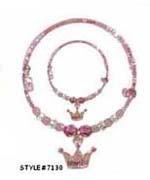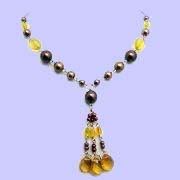Two Large Trade Organizations Call for Uniform Lead Standards
Lead in jewelry was a big issue last year which was originally brought to the public by the Center for Environmental Heath (read our interview on this blog). This press release shows continued desire of leading interests in the jewelry sector to come to uniform standards. As an interesting side note, I was contacted by Universal Screen Art, a company that owns several mail order catalogs that I have done business with, to sign a contract stating that we do not use lead in jewelry we sell to them. ~ Marc
MJSA, FJTA Call For Uniform Lead Standards
Original Release: Diciembre 13, 2007, From Providence, R.I.
Manufacturing Jewelers and Suppliers of America (MJSA) and the Fashion Jewelry Trade Association (FJTA) are supporting national legislation that would establish a uniform standard for lead content in children’s jewelry.
The joint MJSA/FJTA task force has also developed best-practices procedures to help ensure manufacturers can consistently meet that standard.

Children’s Spinning Wheel Metal Jewelry
Necklaces Recalled Due to Risk of
Lead Exposure
The task force proposes that national legislation should be passed establishing the lead threshold for children’s jewelry at 600 ppm (0.06 por ciento), the standard set by the Consumer Product Safety Commission (CPSC) for determining whether or not children’s jewelry should be recalled, as well as the standard adopted by all enacted state legislation in California, Illinois and Minnesota.
 The proposal also says that a definition of children’s jewelry should be established as any jewelry intended for sale to children ages six or younger, which is a commonly accepted threshold set by the majority of state legislation passed or pending.
The proposal also says that a definition of children’s jewelry should be established as any jewelry intended for sale to children ages six or younger, which is a commonly accepted threshold set by the majority of state legislation passed or pending.
Además, the proposal says that acid-extraction guidelines recommended by the CPSC should be used to test children’s chronic exposure to lead from any piece of jewelry, with a limit of 175 micrograms.
 The task force is also recommending that adult jewelry incorporating Class 2 or Class 3 materials (i.e., materials other than gold, platinum, plata, rhodium, natural and cultured pearls, and glass) should contain no more than 6 percent lead content by Aug. 31, 2009. The group has developed a testing procedure based on that used by the CPSC for children’s jewelry.
The task force is also recommending that adult jewelry incorporating Class 2 or Class 3 materials (i.e., materials other than gold, platinum, plata, rhodium, natural and cultured pearls, and glass) should contain no more than 6 percent lead content by Aug. 31, 2009. The group has developed a testing procedure based on that used by the CPSC for children’s jewelry.
The task force has met with national and state legislators, as well as representatives of the CPSC, to educate them about manufacturing and compliance issues, and to encourage specific standards. Además, the task force is working with the National Association of Manufacturers to support uniform, reasonable lead standards in consumer product-safety legislation.
“MJSA is committed to establishing and promoting safety standards for children’s jewelry that are reasonable, uniform and practical,” Curt Ley, interim president of MJSA and chairman of B.A. Ballou and Co., said in a media release. “As individual businesses and as an association, we need to harness our power as a group and help to educate and appropriately guide officials when it comes to issues that affect all of us in the jewelry industry.
Para obtener más información, contacto MJSA en (800) 444-6572 or info at mjsa.org.
